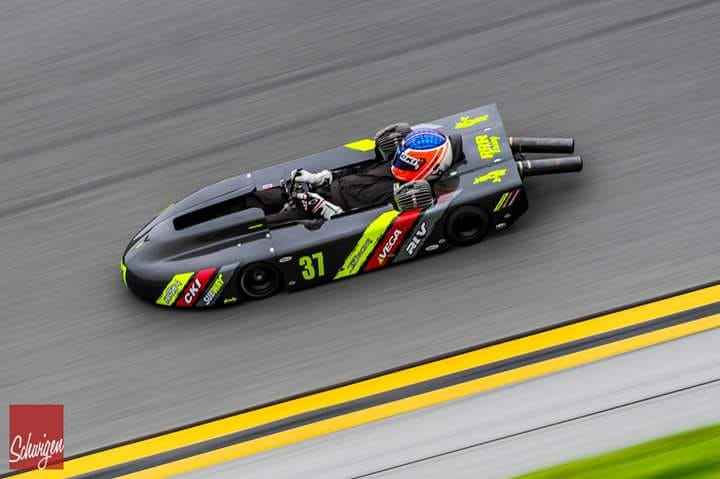I’m not sure if I’m divirging from the topic, but I’ll give the context of some of the stuff they do in the US on long tracks.
Very easily, with one caveat, it’s not typically possible on dedicated kart tracks. Otherwise, it’s just a gearing change and go.
The next trick to add extra top speed is a larger nosecone, this is a non CIK bodywork part that can be used in certain shifter kart classes in the US. Essentially the theory is to use a large cone to “punch” a hole in the air and have the rest of the kart go through it.
@Rapid1 probably has some photo examples of these. I’d say the are good for at least another 5-10 MPH in top speed. Here’s a similar nose style:
The ultimate in top speed of course is to get the driver out of the air and make the kart as narrow as possible. Ie, laydown karts.
Some amazing looking examples here: Coolest, Fastest Karts from WKA Kartweek 2018 at Daytona
You seem keen on crazy ideas, I think if you wanted to showcase your power package, a laydown kart on the banks of Daytona would be a very unique way to do it and would be great content. Of course you’ll have to discuss with the WKA, but you have a few months to prepare ![]()

